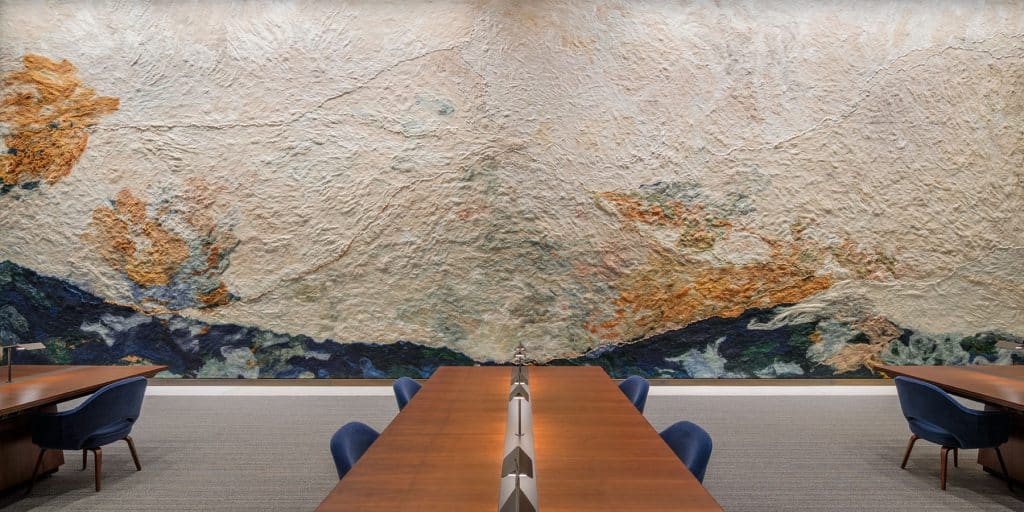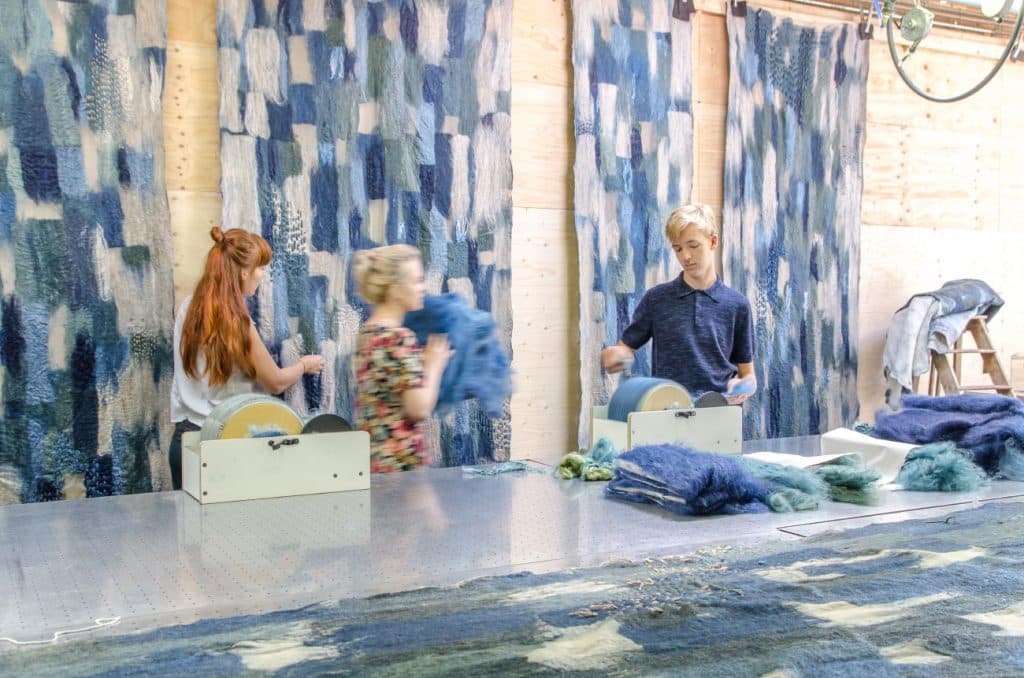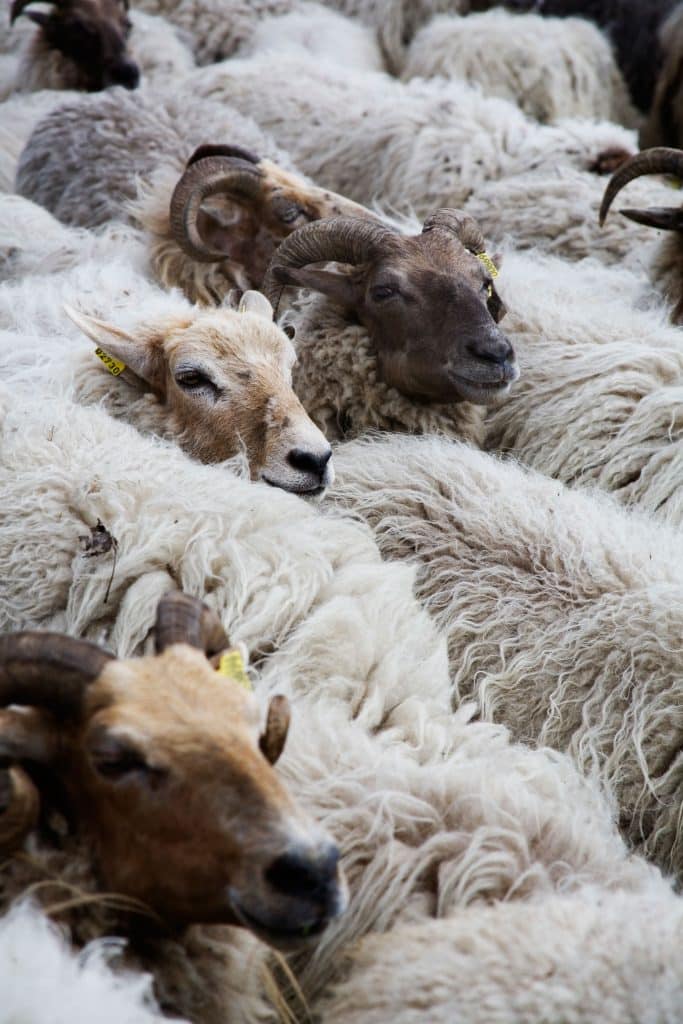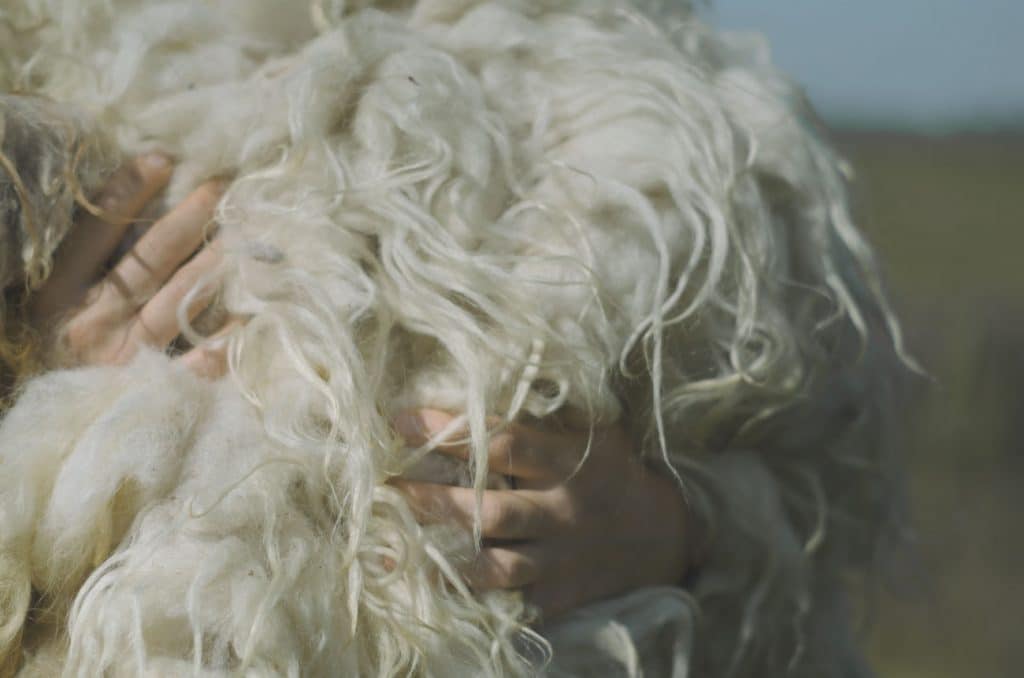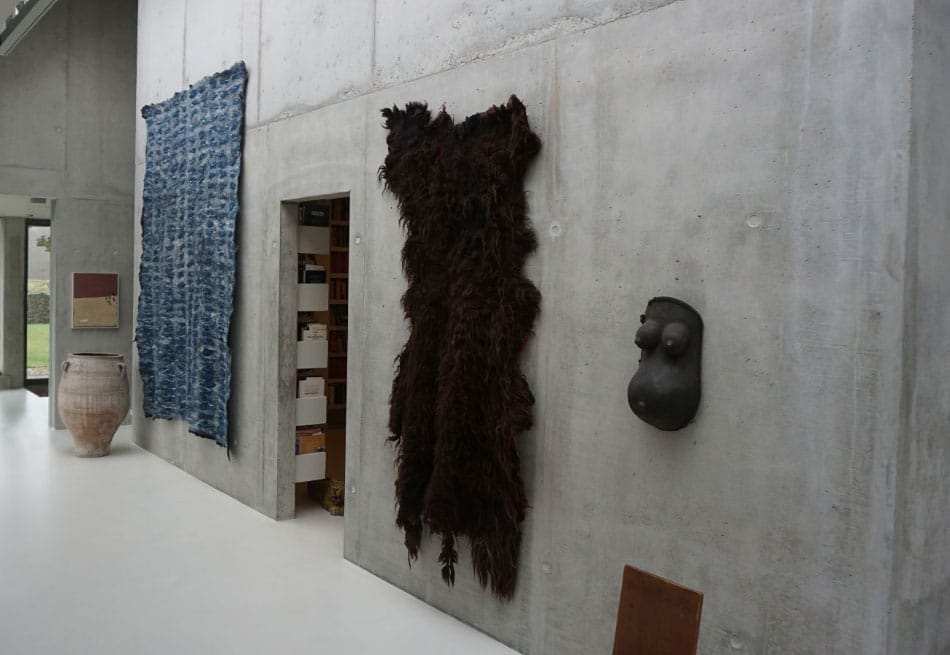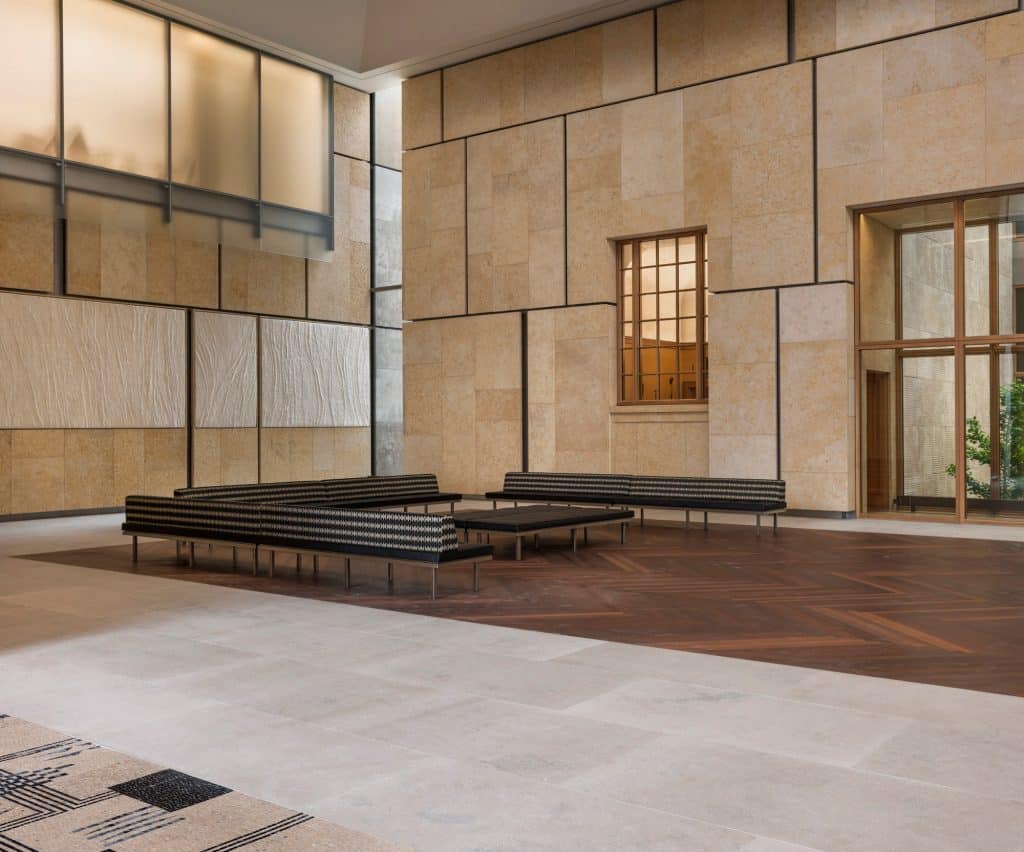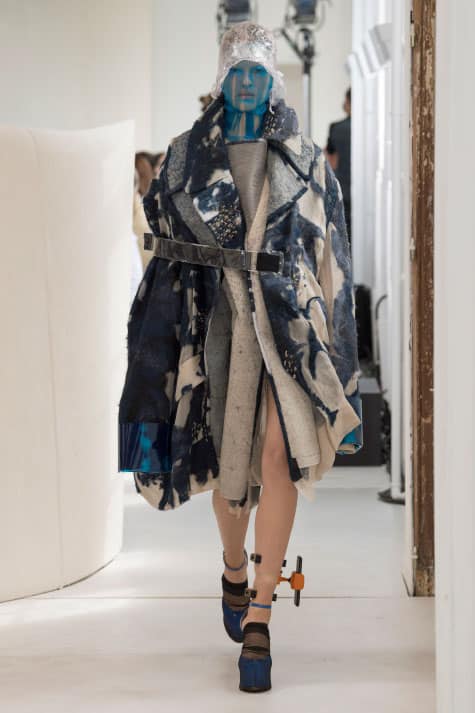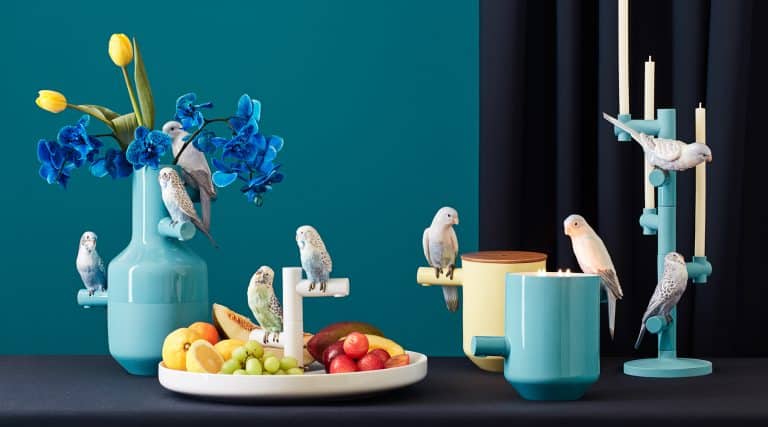
November 11, 2018Dutch textile designer Claudy Jongstra works from a farm in northern Holland where she raises the Drenth Heath sheep whose wool is the raw material for her richly tactile pieces, now available on 1stdibs through Maharam (photo courtesy of Heleen Haijtema). Top: Fields of Transformation, the grandly scaled wall hanging Jongstra made for the University of Pennsylvania. All photos courtesy of Studio Claudy Jongstra unless otherwise noted
Most designers want to control as much of the creative process as possible, but Claudy Jongstra has taken this idea to extremes. From a studio and farm on the edge of Spannum, a tiny rural village in the north of the Netherlands, the Dutch textile designer oversees the production of not only her products but also the basic components from which they are made. Much of the wool for her shaggy, felted fabrics is from her herd of 250 Drenthe Heath sheep, which are shorn each spring. Dye comes from color-rich plants that are grown and harvested locally and lovingly coaxed to release their pigments in her studio.
“I made it my mission to show textiles in their original forms,” says Jongstra. “There’s a legacy in these materials, but we don’t know them anymore. You never see a raw linen or a raw Drenthe Heath, because everything has been processed. But if we’re curious about them, then we can start to appreciate the natural sources again.”
Fortunately, Jongstra’s creations have a knack for making people curious. Her thick, felted Drenthe Heath fabrics, for instance, are so riotously irregular, exploding with long hairy tufts and curls of wool, that they demand to be touched. The textile company Maharam, which carries the pieces and introduced new biodynamic dyes into the collection this past September, sells the works as “hides” and “pelts” rather than bolts of by-the-yard fabric. Collaborating with architects and interior and fashion designers, Jongstra creates textiles that typically take center stage, whether it’s an enormous, 53-by-18-foot wall piece swirling with waves of wool for the Moelis Family Grand Reading Room at the University of Pennsylvania or strikingly splotchy white-and-indigo material for a coat by Maison Margiela.

Several years ago, Jongstra, together with her partner, Claudia Busson, launched Farm of the World in Húns, not far from their base farm. The project explores old-world agricultural practices and celebrates art, while also hosting workshops for underprivileged children.
Jongstra’s work is “seductive,” says Mary Murphy, the senior vice president of design at Maharam. “It’s texture on steroids. The hairiness and combination of matte and luster and the way that the dye is taken a little bit differently by the various fibers are just so interesting, and totally appealing.”
While other designers try to divine the future to stay ahead of trends and manufacturing capabilities, Jongstra has long done exactly the opposite. After studying fashion design at HKU University of the Arts Utrecht, she worked in the clothing industry for a few years. She became captivated by felt after seeing a show at the Netherlands’ TextielMuseum. “It was this incredible exhibition on woolen materials, including wool for a yurt, which was used by nomads,” says Jongstra. “I became interested in that material because of its incredible qualities. I just quit my job and started working, experimenting and doing research.”

In addition to raising sheep, Jongstra has her own dye studio and biodynamic dye garden. In the latter, she grows many of the plants used to create the natural pigments with which she colors her wool. Photo courtesy of Heleen Haijtema
Before long, she was marrying wool with other materials, like linen and mohair, and practicing the ancient technique of using water and friction to produce felt that looked far different from its industrially manufactured siblings. She made primitive-looking fabric for the Jedi costumes in Star Wars: Episode I – The Phantom Menace, presented her wares at the Salone del Mobile in Milan and landed her first American solo exhibition at the Manhattan design shop Moss in 2005. As Jongstra’s reputation grew, she dug deeper to find even more fundamental methods and materials.
In 2008, she established her own biodynamic dye garden and soon began working with local farmers to expand production of raw materials for her studio, including plants like woad, madder and chamomile. In 2014, Jongstra and her partner, Claudia Busson, acquired agricultural land known as De Kreake and started Farm of the World, an organization that celebrates agricultural practices and art and hosts educational workshops for underprivileged children. “We do a program that’s farming in the morning, plus cooking very basic but high-quality biodynamic food, and then, in the afternoon, an art program,” says Jongstra. “We’re trying to keep these children connected to the world.”

For Restaurant ONE, in southeastern Holland, Jongstra made a piece called Vertical Garden using edible dye plants and rusted iron to create the color palette. She based the pattern on the design of the planting beds in the restaurant’s garden. Photo by Jeroen Musch
In all her projects, the designer is focused on cultivating what she calls “tacit knowledge” — the ability to understand and judge the quality of materials through sensory experience — while unearthing conceptions of nature and methods of farming and textile production that were lost centuries ago. “There’s a lot of knowledge literally in your hands,” says Jongstra, noting that the feel of wool under one’s fingertips can speak volumes. “In ancient times, when people worked with textiles, they would tell their children and grandchildren how to process things. But a lot of that knowledge was lost, because it wasn’t articulated very well.”

Among the Jongstra works available on 1stdibs through Maharam are, from left, 008 Woad, 006 Salt and 007 Madder, whose names refer to the dyeing materials and techniques used to produce them. Photos courtesy of Maharam
Jongstra’s latest project involves deciphering 15th-century manuscripts about textile production while hosting hands-on workshops with Utrecht University to explore the techniques they detail. “They’re often called ‘books of secrets’ because they’re very difficult to read, and a lot of the knowledge is not very precise,” she says. “But if we want to understand and preserve our heritage, and translate it into contemporary curricula, it’s really important that we save it.”
Shop Claudy Jongstra on 1stdibs
